Buprenorphine is an opioid medication approved in the early 2000s as a treatment for people addicted to both legal and illegal opioid substances. This medication has a proven record of effectiveness, but current evidence indicates that doctors don’t often prescribe it to their opioid-affected patients. In a study published in March 2014 in the journal Substance Abuse, researchers from five U.S. institutions sought to determine how many people that use/abuse an IV (intravenous) opioid drug are aware of buprenorphine as a treatment option. These researchers also assessed IV opioid users’ willingness to participate in buprenorphine-based treatment.
What Is Buprenorphine?
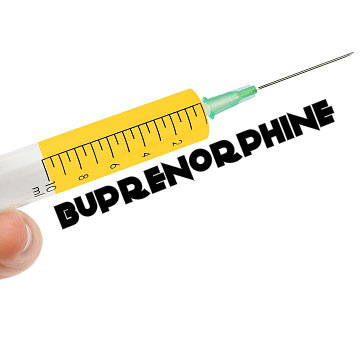 It might seem strange that a doctor would prescribe an opioid medication to help a person affected by opioid addiction; however, buprenorphine does not produce its effects as rapidly as heroin or other commonly abused opioids (or the opioid medication methadone); in addition, the medication has a relatively low maximum level of effect, and people who keep using it after reaching this level will not get any more “high.” In combination, these qualities make buprenorphine suitable as either a short-term or long-term option for people addicted to stronger opioids that enter treatment. Essentially, use of the medication makes it possible for recovering addicts to avoid uncontrolled substance intake while simultaneously avoiding the highly distressing symptoms of complete opioid withdrawal. One commonly used prescription product, called Subutex, contains only buprenorphine. Another commonly used product, called Suboxone, contains both buprenorphine and a second medication (naloxone) that effectively decreases the risks for buprenorphine abuse.
It might seem strange that a doctor would prescribe an opioid medication to help a person affected by opioid addiction; however, buprenorphine does not produce its effects as rapidly as heroin or other commonly abused opioids (or the opioid medication methadone); in addition, the medication has a relatively low maximum level of effect, and people who keep using it after reaching this level will not get any more “high.” In combination, these qualities make buprenorphine suitable as either a short-term or long-term option for people addicted to stronger opioids that enter treatment. Essentially, use of the medication makes it possible for recovering addicts to avoid uncontrolled substance intake while simultaneously avoiding the highly distressing symptoms of complete opioid withdrawal. One commonly used prescription product, called Subutex, contains only buprenorphine. Another commonly used product, called Suboxone, contains both buprenorphine and a second medication (naloxone) that effectively decreases the risks for buprenorphine abuse.
Effectiveness And Access Of Buprenorphine
Numerous studies have verified the effectiveness of buprenorphine and buprenorphine/naloxone as treatments for opioid addiction and opioid dependence (a state of physical reliance that does not include the dysfunctional symptoms of addiction). In addition, unlike methadone, which can only be administered to patients in a fairly small number of sanctioned clinics, any doctor who obtains a mandated ID number from the U.S. Drug Enforcement Agency can prescribe buprenorphine and buprenorphine/naloxone. This means that, theoretically, people affected by opioid addiction can get buprenorphine-based treatment in a far greater number of locations than they can gain access to methadone. Thousands of doctors across the U.S. have gone through the training needed to properly prescribe buprenorphine and buprenorphine/naloxone and have also registered with the DEA.
Awareness Among IV Opioid Users
In the study published in Substance Abuse, researchers from Johns Hopkins University, the City University of New York, the Albert Einstein College of Medicine, the Montefiore Medical Center and New York Harm Reduction Educators used an examination of 158 IV opioid users in New York City to assess how many such users know about buprenorphine as a treatment option for opioid addiction. All of these users were participants in a syringe exchange program. In addition to gauging basic awareness among these individuals, the researchers used interviews to determine how many people had received some form of buprenorphine and how many people displayed a willingness to try the medication or learn more about it. The researchers also looked for any connection between established familiarity with buprenorphine and the willingness to use the medication.
All told, the researchers found that most of the study participants (70 percent) had heard about buprenorphine as a possible treatment option. Roughly one-third of the participants (32 percent) had first-hand knowledge of someone who took buprenorphine, while another third (31 percent) had second-hand knowledge of someone who took the medication. Only 12 percent of all the individuals enrolled in the study had received buprenorphine themselves. When the researchers asked the 138 participants with no personal history of buprenorphine use if they were curious about using the medication, more than half of these individuals (57 percent) replied in the affirmative. Upon further investigation, the researchers concluded that curiosity about buprenorphine use was basically limited to those participants with second-hand knowledge of the medication.
The authors of the study published in Substance Abuse note that the opioid users enrolled in their project were among those that may be overlooked by programs offering treatment for opioid addiction. Even still, most of these individuals knew about the medication and many showed a willingness to learn more about it or possibly use it as a treatment option. The study’s authors believe that public health officials should explore the interest shown by those IV opioid users with second-hand knowledge of buprenorphine as a potential inroad for eventually making active treatment with the medication more widespread.
Read More About Successful Buprenorphine/Naloxone Treatment For Opioid Addiction
16 Apr 2014
Is Prescription Drug Misuse, Abuse?
Prescription drug abuse is a pressing concern in modern American society, where millions of adults and younger individuals take potentially addictive medications without proper authorization or for purely recreational purposes. However, not all people who abuse a prescription medication necessarily understand what they’re doing. In a study published in March 2014 in the journal Substance Abuse, researchers from New York University used a small-scale experiment to estimate how many people know what constitutes participation in prescription drug abuse.
Is Misusing Abusing?
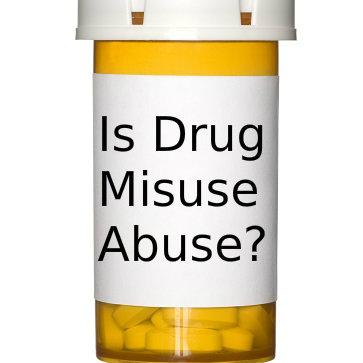 Prescription drug abuse is also sometimes known as the nonmedical use of prescription drugs. Technically, a person participates in this form of abuse whenever he or she knowingly takes his or her prescribed medication in a manner other than intended or knowingly takes a medication prescribed for someone else. However, some public health experts make a distinction between prescription drug abuse and prescription drug misuse. This distinction holds that abusers purposefully seek to obtain a nonmedical benefit from improper use of a medication, while misusers seek to obtain a medical benefit (such as pain relief) from improper medication use. In addition, public health officials typically distinguish between the abuse/misuse of medications that have no potential to trigger physical dependence and addiction, and the abuse/misuse of medications with an addictive potential.
Prescription drug abuse is also sometimes known as the nonmedical use of prescription drugs. Technically, a person participates in this form of abuse whenever he or she knowingly takes his or her prescribed medication in a manner other than intended or knowingly takes a medication prescribed for someone else. However, some public health experts make a distinction between prescription drug abuse and prescription drug misuse. This distinction holds that abusers purposefully seek to obtain a nonmedical benefit from improper use of a medication, while misusers seek to obtain a medical benefit (such as pain relief) from improper medication use. In addition, public health officials typically distinguish between the abuse/misuse of medications that have no potential to trigger physical dependence and addiction, and the abuse/misuse of medications with an addictive potential.
There are several reasons any given individual might start abusing/misusing a prescription medication. For example, some people mistakenly believe that since prescription medications come from doctors, they don’t pose a particular danger even when used in an unintended manner. Known risks of prescription medication abuse/misuse include the development of a diagnosable case of drug abuse or drug addiction (i.e., substance use disorder) and the onset of a nonfatal or fatal overdose.
Extent Of The Prescription Misuse Problem
The federal Substance Abuse and Mental Health Services Administration tracks year-to-year trends in prescription drug abuse through an annual project called the National Survey on Drug Use and Health. The most recent available figures from this survey, which cover part of 2011 and most of 2012, indicate that about 6.8 million American adults and teenagers abuse a mind-altering, potentially addictive medication in the average month. This number represents roughly 2.6 percent of the total adult and teen U.S. population. In descending order of popularity, the four classes of medications most commonly targeted for abuse are opioid painkillers, tranquilizers, stimulants and sedatives. Opioid painkiller abuse occurs far more often than any other form of prescription medication abuse.
How Many Understand The Definition Of Abuse?
In the study published in Substance Abuse, researchers from three branches of New York University (including the NYU School of Medicine and the NYU College of Nursing) used a small-scale assessment of 27 patients receiving treatment at a primary care clinic to estimate how many people understand the definition of prescription drug abuse (defined by the research team as nonmedical prescription drug use/prescription drug misuse). They began this assessment by asking each of the study participants to complete a brief questionnaire on the use/misuse of alcohol, tobacco, illegal/illicit drugs and prescription medications. In addition, the researchers used interviews to probe the answers each participant gave on his or her questionnaire. Six of the 27 patients had a recent history of prescription drug abuse/misuse, while another eight had a recent history of abusing an illegal/illicit substance.
The researchers found that all but one of the study participants understood what constitutes the use of an illegal or illicit drug. However, fully 41 percent of the participants inaccurately described what constitutes the abuse/misuse of prescription medications. The most frequently encountered inaccuracy was a failure to distinguish between medications with a potential for triggering problems with abuse and addiction, and medications that have no such potential. Interestingly, none of the study participants with a history of illegal/illicit drug use inaccurately understood the meaning of prescription drug abuse/misuse.
The authors of the study published in Substance Abuse concluded that many of the patients who discuss prescription drug abuse/misuse with their doctors may not understand the terms and definitions that doctors commonly employ. This tendency toward misunderstanding appears to be especially prominent in people who have no personal experience with illegal/illicit drug intake. Based on these findings, the study’s authors believe that primary care doctors who screen their patients for potential prescription drug abuse may inadvertently misidentify those patients as medication abusers in a significant number of cases. In line with this belief, they point toward a need to clarify the language used to explain prescription drug abuse/misuse to patients.
Read about The Effects Of Psychosis On Drug Misuse
The United States is awash in opioid painkillers with addiction rampant. Since 1999 prescriptions for opioids have tripled and the number of opioid-related deaths have quadrupled, with legally prescribed medications now accounting for 60 percent of drug overdoses. There are five million Americans currently addicted to opioids, and three out of four overdose fatalities are caused by opioids. So do we really need another opioid medication? Do the benefits outweigh the risks?
What Is Zohydro?
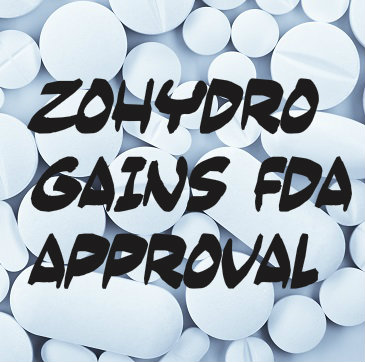 A new opioid called Zohydro, approved by the Food and Drug Administration (FDA) in late 2013, is Hydrocodone with an extended, 12 hour release formula. For comparison, the painkiller Vicodin is Hydrocodone with acetaminophen. Zohydro has no acetaminophen – it’s unadulterated Hydrocodone that has been described as five or 10 times stronger than Vicodin. A single tablet could kill a child, and two pills could be enough to kill an older person unaccustomed to opioids.
A new opioid called Zohydro, approved by the Food and Drug Administration (FDA) in late 2013, is Hydrocodone with an extended, 12 hour release formula. For comparison, the painkiller Vicodin is Hydrocodone with acetaminophen. Zohydro has no acetaminophen – it’s unadulterated Hydrocodone that has been described as five or 10 times stronger than Vicodin. A single tablet could kill a child, and two pills could be enough to kill an older person unaccustomed to opioids.
Additionally, the pills are not crush or addiction resistant. As the opioid epidemic grew, many manufacturers reformulated their pills in order to make them more difficult to abuse. One way to achieve this is to add certain ingredients to the pills which cause unpleasant side effects if they are crushed and snorted or injected. Those side effects are not present when the drugs are taken orally as prescribed. People addicted to opioids often snort or inject them in order to get a fast and intense high.
FDA Approval Of Zohydro
However, the FDA decided to approve Zohydro with none of these precautions in place. A loud outcry from doctors, congressmen, pharmacists, lawyers, addiction specialists and state Attorneys General followed. All of these and more have asked the FDA to reconsider its decision to approve the potent new drug. Add to the list the FDA’s own advisory panel which voted overwhelmingly (11-2) to withhold approval of Zohydro.
A group of experts has written a forceful letter to the FDA urging it to rethink its decision to approve Zohydro. The addiction risk is simply too overpowering, the experts explain.
A look at the benefits gained versus risks imposed lead experts to say this should be enough to halt the drug’s release. We already know it‘s impossible to keep drugs in the hands of pharmacists, physicians and legitimate patients. A certain amount will inevitably be diverted toward un-prescribed and illicit use. And that, in turn, will mean a surge in opioid addiction.
Experts agree that the more opioid pills available in the country, the greater the risks for addiction. So one would expect approval of new opioids to be very hard to come by, which is what makes the Zohydro case so very perplexing.
There is an already a climate of opioid abuse. Opioids without tamper-resistant formulas or addiction-resistant formulas are ripe for abuse. And important voices from every direction are crying “Stop!”
Read About Understanding Opioid Related Disorders
21 Mar 2014
Is Your Loved One Abusing Pain Pills?
Prescription painkillers are serious drugs that are effective and help many people, but they are also risky. These medications are opioids, which means that they produce a euphoric feeling in the user, or a high, and they are addictive. If someone you love has been prescribed a narcotic painkiller, be aware of the dangers and the possibility of abuse. Know how to read the signs that he is abusing the pills and be prepared to intervene before it is too late.
What Are Opioid Painkillers?
Opioid painkillers are controlled substances used to treat severe and chronic pain. An opioid is any drug that is derived from the compounds found in the opium poppy. Heroin, the highly addictive street drug, is an opioid. Prescription opioid painkillers include oxycodone, hydrocodone, morphine and hydromorphone. They are sold under various brand names. These drugs block pain signals, but they also cause a pleasant feeling, and if abused, create changes in the brain that often lead to dependence.
What Are The Signs Of Opioid Abuse?
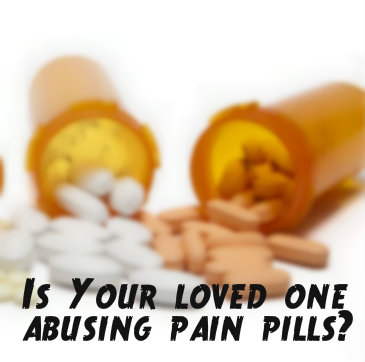 It is important to understand that there is a difference between abuse and addiction. Your loved one may be abusing painkillers if he is using them to get high or if he is taking more than he was directed by his doctor to take. Abuse is not addiction, but it can easily lead to that state. Being aware of the signs of abuse is important so that you can help him before he becomes addicted. If he is abusing his medications, chances are he will try to hide it from you. Here are some signs to watch for:
It is important to understand that there is a difference between abuse and addiction. Your loved one may be abusing painkillers if he is using them to get high or if he is taking more than he was directed by his doctor to take. Abuse is not addiction, but it can easily lead to that state. Being aware of the signs of abuse is important so that you can help him before he becomes addicted. If he is abusing his medications, chances are he will try to hide it from you. Here are some signs to watch for:
- Look for signs that your loved one is high on opioids. If he is taking them as directed he may experience a little bit of a high, but if he is abusing his pills the symptoms will be greater. Someone who is high on opioids will become drowsy and have slowed breathing and movements. He may also become anxious, have mood swings or become apathetic or depressed.
- Opioid abuse causes a lack of energy. If your loved one seems tired all the time, especially throughout the day, and skips out on activities he normally enjoys, he may be abusing his medications.
- Opioids also cause people to lose focus. Look for signs that your loved one’s attention span is changing. Maybe he can’t focus on his favorite television show. Maybe he is having problems at work because he loses focus and drifts.
- Look for physical signs. Opioids cause certain physical changes that you can watch for. Look for a lot of itching, flushing in the neck or face, extremely constricted pupils, a runny nose, a lot of yawning, nausea and vomiting and flu-like achiness.
- Watch for secretive behaviors. If your loved one is abusing his medications, he likely knows he is doing something wrong, and he will probably try to hide the behavior from you. Be aware of any behaviors that seem unusual or that indicate he may be hiding something from you.
- Be aware of mood swings or personality changes. Any kind of drug abuse can cause behavioral and personality changes. If he is acting strangely and you have no other explanation for his mood swings, drug abuse may be the culprit.
If your loved one has been prescribed opioids for pain, there is no reason to assume he will begin abusing them. However, many people have fallen into that trap without meaning to do so. Be aware of the signs of abuse and pay attention. You could be saving his life by intervening.
Read About Teens Abusing Painkillers
Seniors make up 13 percent of the population of the United States, yet they account for more than one-third of the prescription medications. One-half of all seniors were taking at least three prescription medications as of the year 2000, up from one-third in 1988.
With so many seniors taking prescription drugs, it shouldn’t be surprising that they are a part of the rising problem of prescription drug abuse. Nevertheless, senior drug abuse remains a largely hidden problem, in large part because elderly people do not fit the common profile of someone dealing with drug abuse or addiction.
In the coming decades, this problem can only be expected to grow. Seniors are one of the fastest growing segments of the population, as the first wave of the baby boom generation has reached senior citizen status. By 2030, seniors are expected to make up one-third of the country’s population.
What Are The Hidden Symptoms Of Senior Addiction?
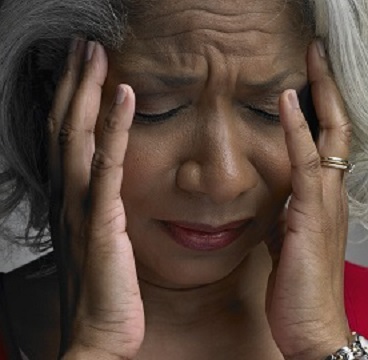 Identifying the signs and symptoms of drug problems in seniors presents various challenges. One of the biggest difficulties is the fact that a number of these signs and symptoms can mirror normal signs of aging.
Identifying the signs and symptoms of drug problems in seniors presents various challenges. One of the biggest difficulties is the fact that a number of these signs and symptoms can mirror normal signs of aging.
Among the symptoms of drug use that may be mistaken for signs of aging are disorientation, poor balance, memory loss, chronic boredom, depression, shaky hands, poor balance and mood swings. Since seniors do not fit the stereotypical profile of someone with drug problems, recognizing when such symptoms spring from drug use and not just aging is a challenge for loved ones and health professionals alike.
Drug Abuse Vs. Misuse – Is There A Difference?
When examining drug problems among seniors, it is helpful to make the distinction between drug abuse and drug misuse. Drug misuse refers to the use of prescription medications in a way that does not comply with the prescription instructions. Drug misuse can be entirely unintentional, and the result of unclear instructions or confusion. Drug misuse can also be intentional; for example, patients may take more than the prescribed dose without consulting their doctor if they feel that the prescribed dose is not having an effect. In general, the term misuse is used to refer to the incorrect use of legitimately prescribed drugs, with the intent of treating an established medical problem.
In contrast, drug abuse refers to people who use drugs for recreational purposes. They may abuse illegal drugs that have no therapeutic purpose, or they may use therapeutic drugs incorrectly in order to achieve a euphoric high or some other pleasurable feeling.
Both drug misuse and drug abuse can result in drug dependence and other negative side effects. However, drug misuse is usually the easier problem to solve. The most common reason for drug misuse is an ineffective treatment plan, and the problem will usually disappear if treatment is revisited and a more effective plan put in place.
Drug abuse among seniors is much less common than drug misuse. Nevertheless, the problem does exist for 12 to 15 percent of elderly people who seek medical help.
What Are The Commonly Abused Drugs Among The Elderly
Opioid drugs, depressants, stimulants, benzodiazepines and over-the-counter (OTC) medications are the drugs most frequently abused among seniors. Opioids are typically prescribed for pain relief; depressants are prescribed for anxiety and sleep disorders; stimulants are prescribed for narcolepsy and ADHD; and benzodiazepines for anxiety and insomnia.
Opioids are particularly dangerous drugs to abuse or misuse because they are extremely addictive. These medications are chemically similar to the illegal drug heroin, and can be just as addictive as heroin when used incorrectly.
After prescription drugs, alcohol is the most commonly abused substance among the older adult population. OTC medications can react poorly with alcohol, leading to negative consequences that would not otherwise be present with these medications. They can also react badly with prescription drugs.
Find Out The Strategies To Address Senior Drug Problems
Tailoring education, consumer information and screening efforts to older adults are some key steps to reducing drug abuse among the elderly.
Although seniors are the most significant consumers of prescription drugs, promotional and educational materials are often not geared toward them. Helpful tools might include educational materials available in large print and drug diaries to help track medications.
Educational efforts aimed at reducing drug abuse should also keep seniors in mind. Teenagers aren’t the only segment of the population that needs education about drug and alcohol abuse. The more society recognizes that seniors are an at-risk population, the more education and screening efforts may be available in retirement communities, senior centers, city parks and recreation departments, and other places where the elderly can benefit.
Read More About Why Drug Use Is Surging In Baby Boomers
20 Feb 2014
How Depression Increases Risks For Drug Overdose
A drug overdose occurs when an individual takes enough of a substance to overload the body’s organ systems and create a sharp drop in the ability to sustain life. Some people die from the impact of an overdose, while others manage to survive with or without medical assistance. In a study review published in January 2014 in the journal Drug and Alcohol Dependence, a team of Italian and British researchers sought to determine how the presence of major depression or some other depressive disorder affects the likelihood that a drug user will experience a non-fatal overdose.
 ER Treatment For Overdosing On Painkillers
ER Treatment For Overdosing On Painkillers
The federal Centers for Disease Control and Prevention (CDC) track drug overdose rates across the U.S. According to the CDC’s latest available statistics (from 2011), roughly 2.5 million Americans require emergency room treatment for an overdose each year. More than half of all cases (about 1.4 million) occur in people using a medication rather than an illegal substance. Medications specifically highlighted for their presence in overdose cases include opioid narcotic painkillers and sedative-hypnotics called benzodiazepines.
Some people unintentionally overdose on drugs or medications while involved in prescribed or recreational use. However, others overdose intentionally while attempting to commit suicide. More than half of all people successfully or unsuccessfully treated for an overdose are men or boys. Slightly more than four out of every five overdose cases occur in adults over the age of 20.
Types Of Depressive Disorders
In addition to major depression, the depressive disorder category of mental health ailments (which comes from terms established by the American Psychiatric Association) includes conditions called persistent depressive disorder, premenstrual dysphoric disorder and disruptive mood dysregulation disorder. The category also includes substance/medication-induced depressive disorder, a term specifically used to identify depression cases triggered by short- or long-term drug, alcohol or medication intake.
All depressive illnesses include episodes of “down” moods that substantially damage the ability to achieve a sense of well-being or function normally from day to day. The intensity and duration of these episodes vary according to both the effects of each specific illness and the way in which that illness manifests in the individual. People affected by another group of conditions, called bipolar disorders, also experience periods of a prominently “down” mood. One bipolar disorder in particular, called bipolar I disorder, produces periods of depression equally as severe as those found in people diagnosed with major depression.
Depression’s Impact On Non-Fatal Overdoses
In the study review published in Drug and Alcohol Dependence, researchers from five British and Italian institutions used a comprehensive analysis of previous research efforts to examine how the presence of a depressive disorder affects an individual’s non-fatal overdose risks. This analysis, based on seven studies, included essentially all commonly available information published on a related topic in the U.S. or Europe through September 2012. All told, the studies under consideration included 12,019 people living in the U.S., Australia, Sweden, Canada and Norway.
The researchers used two measurements to assess the impact of depression. First, they compared the overall rate of non-fatal drug overdose among depressed people to the rate of non-fatal overdose among people not affected by depression. They also calculated the odds that any given depressed drug user will overdose non-fatally and compared those odds to the chances that any given non-depressed drug user will overdose non-fatally.
The researchers found that depressed individuals overdose non-fatally 7 percent more often than non-depressed individuals. While this difference may seem small, it is actually highly significant in statistical terms. The researchers also found that, when compared to a non-depressed drug-using person, the odds that any given depressed drug-using person will experience a non-fatal overdose are 1.45 to 1.
Potential Factors Why Depression Leads To Higher Risks For Non-Fatal Drug Overdoses
The authors of the study review published in Drug and Alcohol Dependence don’t know for sure why depressed people have higher risks for a non-fatal drug overdose; potential factors may include higher drug dosages in depressed people and higher chances for multidrug use (a known contributor to overdose) in depressed people. They also note that no one can assume that the same situation holds true for fatal drug overdoses until someone comprehensively explores that issue. Still, they believe their findings clearly show that the connection between depressive illnesses and non-fatal drug overdoses is real. They also believe that the same connection probably exists between depressive illnesses and fatal drug overdoses.
Read More About New Research For Depression Treatment For Left Handers
Buprenorphine is an opioid narcotic medication used to ease a reliance on stronger narcotics during recovery from active drug addiction. For specific reasons, doctors often combine the use of this medication with a secondary medication called naloxone. In a study published in November 2013 in the journal Addictive Behaviors, researchers from the State University of New York, Buffalo explored the reasons some people successfully complete buprenorphine/ naloxone treatment for opioid addiction, while others do not.
Dependence Risks Of Using Opioids
All opioid substances produce two primary effects when introduced into the human body: a highly pleasurable (euphoric) mental state and a significant reduction in the ability to feel pain. Doctors rely on the pain-relieving effects of prescription opioids to relieve serious forms of pain, but must constantly monitor the possibility for the onset of opioid dependence and the subsequent development of an opioid addiction. Since illegal or illicitly used opioids produce the same basic effects as suitably prescribed opioids, intake of these substances also comes with serious dependence and addiction risks.
How Buprenorphine Is Used For Addiction
 Buprenorphine is a significantly less powerful drug than the popular legal and illegal opioids of abuse. When an opioid addict switches over to buprenorphine use, he or she commonly experiences a reduction in euphoric and painkilling sensations, and also gradually reduces his or her level of physical dependence on narcotics in general. Doctors take advantage of these qualities by prescribing the medication during opioid addiction treatment. Instead of facing intense, potentially overwhelming symptoms of opioid withdrawal during the early stages of the treatment process, patients who switch over to buprenorphine typically avoid withdrawal and set themselves up for an increased likelihood of long-term addiction recovery.
Buprenorphine is a significantly less powerful drug than the popular legal and illegal opioids of abuse. When an opioid addict switches over to buprenorphine use, he or she commonly experiences a reduction in euphoric and painkilling sensations, and also gradually reduces his or her level of physical dependence on narcotics in general. Doctors take advantage of these qualities by prescribing the medication during opioid addiction treatment. Instead of facing intense, potentially overwhelming symptoms of opioid withdrawal during the early stages of the treatment process, patients who switch over to buprenorphine typically avoid withdrawal and set themselves up for an increased likelihood of long-term addiction recovery.
In the U.S., the manufacture and distribution of buprenorphine (and all other legal and illegal opioids) are regulated under a federal law called the Controlled Substances Act. This law specifically stipulates that doctors who give their patients buprenorphine during opioid addiction recovery must also either provide access to some sort of therapeutic counseling or direct their patients to other counseling resources. The counseling options most commonly offered to individuals receiving buprenorphine are a reward/punishment approach called contingency management (CM) and a gradual behavior modification therapy called cognitive behavioral therapy (CBT). However, in reality, not all buprenorphine recipients end up participating in a counseling program, even when they have access to such a program.
How Naloxone Is Utilized With Buprenorphine
Naloxone is not an opioid drug. In fact, it was originally developed as an anti-opioid medication, and has the ability to rapidly halt the effects of opioid intoxication inside the body. Doctors use the combination of buprenorphine and naloxone to reduce the chances that a person going through opioid addiction treatment will abuse buprenorphine instead of using that medication as directed. When the two medications are dissolved together under the tongue, enough buprenorphine reaches the bloodstream to help relieve opioid withdrawal; at the same time, the presence of naloxone limits buprenorphine’s impact and reduces its usefulness as a target of drug abuse. A prescription medication called Suboxone contains the proper proportions of buprenorphine and naloxone to achieve the desired treatment objectives.
Buprenorphine/Naloxone Opioid Addiction Treatment
In the study published in Addictive Behaviors, the SUNY Buffalo researchers used an examination of 356 opioid-addicted adults to explore the factors that contribute to the successful completion of addiction programs centered on the combined use of buprenorphine and naloxone. All of these adults were enrolled in a six-month treatment course that provided access to counseling resources. 127 of the participants successfully completed the course, while the remaining 229 participants did not.
After assessing the impact of a range of potential factors, the researchers concluded that the individuals who successfully completed a naloxone and buprenorphine opioid addiction treatment differed from those who did not complete treatment in two key ways. First, they took advantage of the counseling resources made available to them and established good records of counseling attendance. Interestingly enough, they also had histories of previous, significant physical injuries.
The authors of the study published in Addictive Behaviors don’t know for sure why prior experience of a physical injury increases the chances that an individual will complete buprenorphine/naloxone-based opioid addiction treatment. However, they do have a potential explanation. Previously injured people may have a history of exposure to chronic pain; in turn, use of buprenorphine during addiction treatment may help relieve that pain in addition to decreasing a reliance on the addictive effects of stronger opioids. It is the combination of withdrawal avoidance and ongoing pain reduction that may account for the link between prior injury and successful buprenorphine/naloxone treatment outcomes.
Read More About Opioid Related Disorders And Break Free From Addiction!
Already this fall one college campus has been rocked by prescription drug abuse. A cheerleader from the University of Minnesota was arrested in September when she was found in possession of drugs without a prescription. This is but a microcosm of a serious national problem. Young people all across America are buying and sharing powerful prescription medications.
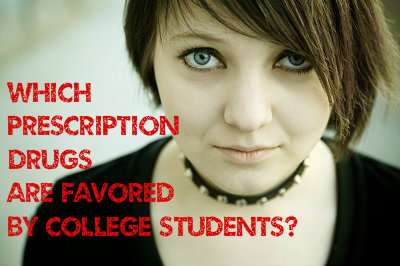 The 18-year-old at the University of Minnesota was seen wandering up and down the halls of her dormitory, seemingly in a drunken state. When officials entered her dorm room they found prescription painkillers but no prescription. They also found an electronic scale and an undisclosed amount of marijuana. She is facing three separate felony charges and potentially five years in prison.
The 18-year-old at the University of Minnesota was seen wandering up and down the halls of her dormitory, seemingly in a drunken state. When officials entered her dorm room they found prescription painkillers but no prescription. They also found an electronic scale and an undisclosed amount of marijuana. She is facing three separate felony charges and potentially five years in prison.
Majority Of College Students Sharing Prescriptions?
But her story is far from unique. One survey reported that 70 percent of college co-eds said they shared prescription medications with one another. A health official told a local news station that that for every one student with a legitimate prescription another five students possess stimulants with no prescription. And the problem is not restricted to college campuses. Another study found that 20 percent of graduating high school students say they have used prescription drugs for non-medical purposes.
One reason prescription drug abuse has escalated has to do with the enormous supply of pills that are floating around where young people can get them. An astounding 210 million prescriptions were written by doctors for painkillers in 2010, and that number has only gotten larger. With that many pills sitting on shelves in homes it’s hard to choke off the supply.
Opiates And Stimulants – Drugs Favored By College Students
The most popularly abused prescription drugs are opiate painkillers derived from the same opium poppy as heroin. When meds become harder to get or start costing too much, kids move on to heroin as it produces similar effects at a fraction of the cost.
Stimulants like Adderall and Ritalin are also popular among young people. These drugs are most often used to treat the symptoms of attention deficit hyperactivity disorder, but healthy kids take them to increase study skills, stay awake for parties and lose weight.
Dangers Of Prescription Drug Abuse
According to the Centers for Disease Control, at least 100 people die each day as a result of prescription drug overdose. The danger is real, though young people seem oblivious. The arrest of a pretty young college cheerleader is just the tip of the iceberg.


